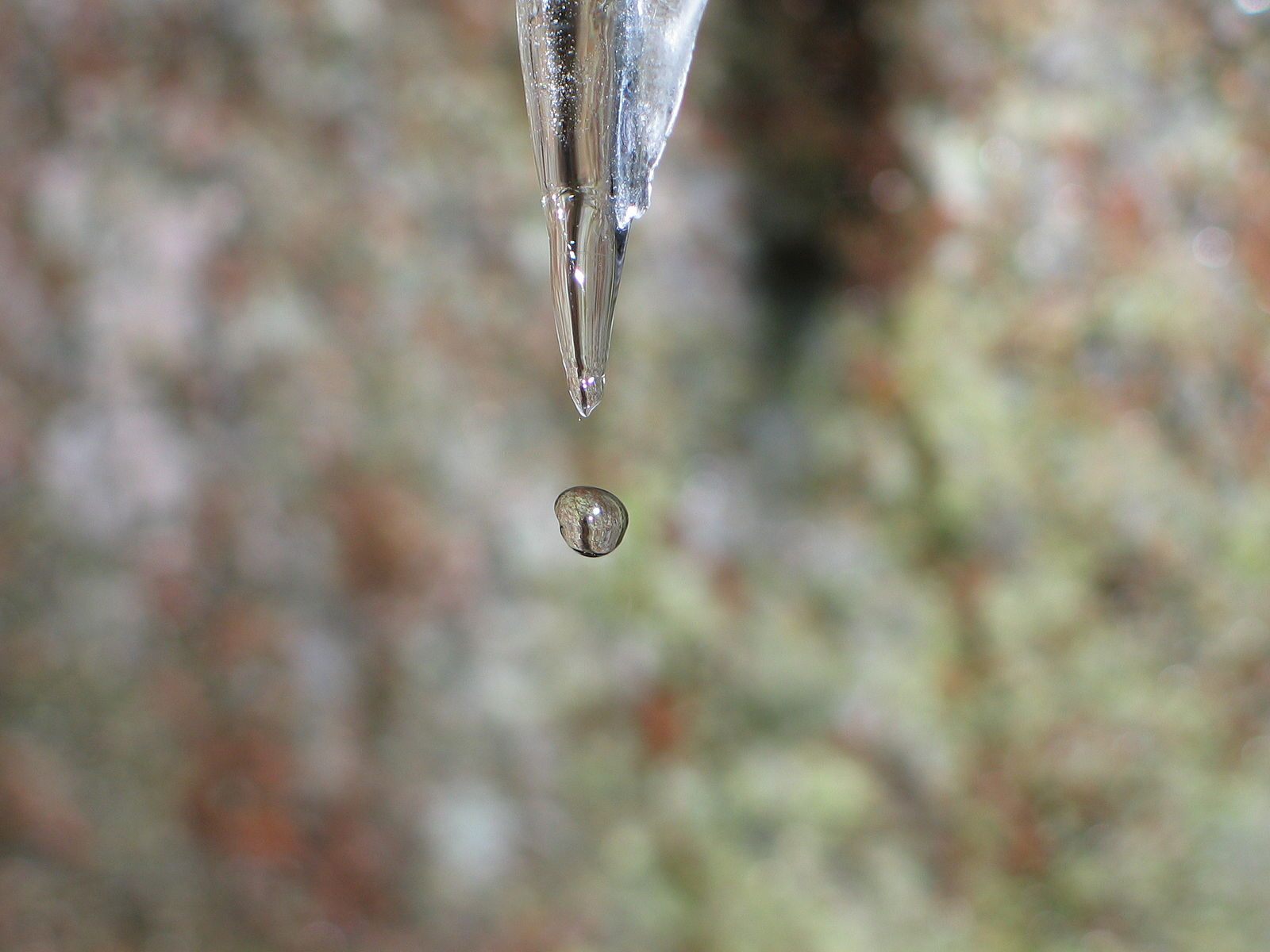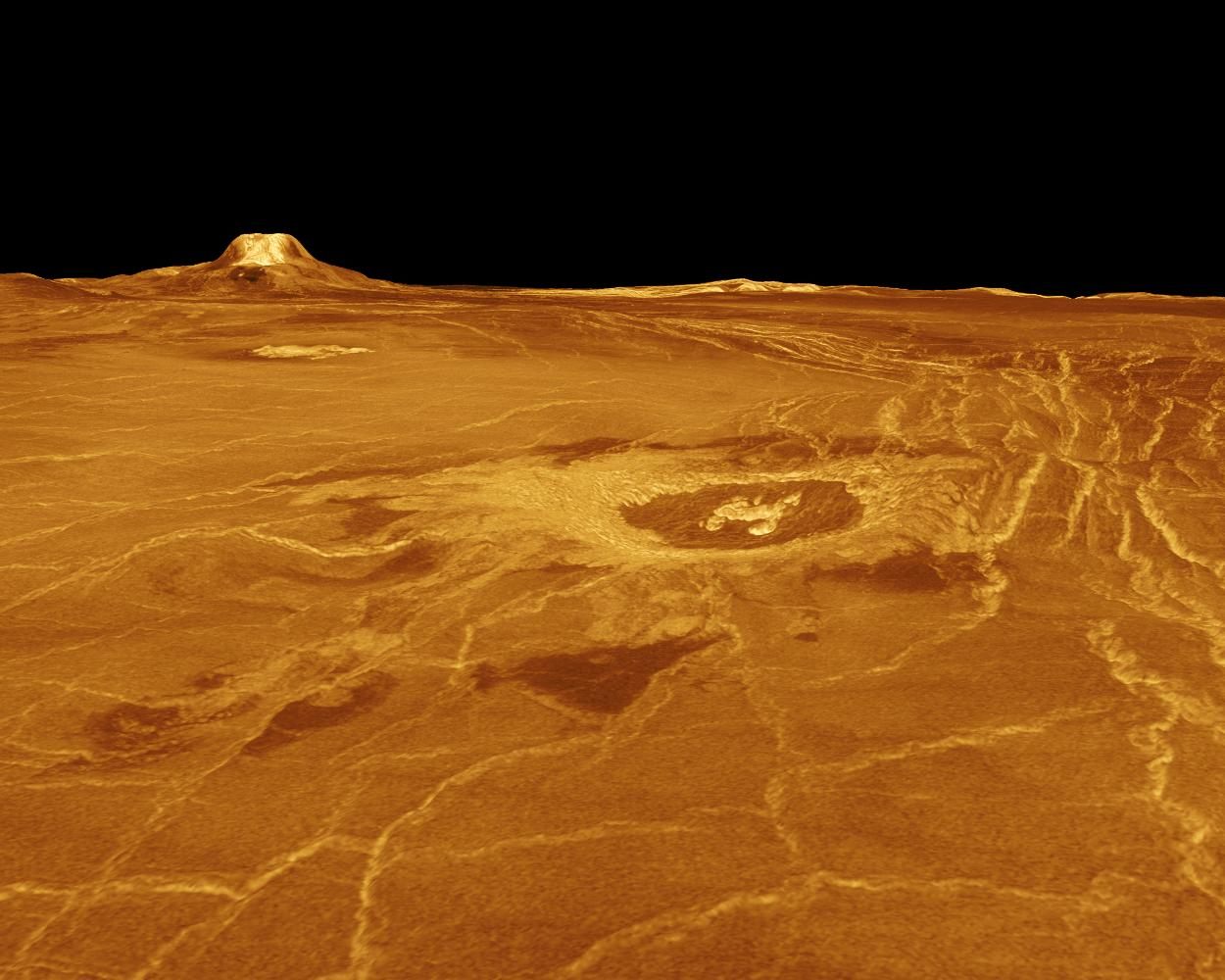Polywater, the Soviet Scientific Secret That Made the World Gulp

Water demonstrates a few of its unique properties. (Photo: Jonas Bergsten/WikiCommons Public Domain)
In the pantheon of chemical compounds, water is our Zeus. Its properties make it well-suited for various vital purposes—it’s a near-universal solvent, it shuffles around other vital molecules and helps them keep their shape, and it travels pretty well itself, changing from liquid to solid to vapor. Our planet and our bodies are swimming in it. When we travel outside of our atmosphere, it’s the first thing we search for, because we (literally) can’t imagine life without it.
Because of this, we’ve got a pretty good handle on the stuff. People have been storing water in cisterns and ferrying it through pipes for at least 5000 years. But never through teeny-tiny pipes, until 1961—when things got weird. That year, Nikolai Fedyakin, a chemist at the Technological Institute of Kostroma in the then-Soviet Union, noticed that when he sealed pure water in extremely narrow glass tubes and let it sit for long periods of time, a weird substance collected in the upper parts of the tubes. The substance, Fedyakin thought, must have been H20. He had purified his experimental setup scrupulously, even swapping out glass tubes for sterilized quartz, and there was nothing else in the system. But this new water looked very different—like small beads of waxy oil—and acted it, too, boiling at anomalously high temperatures and “freezing” at strangely low ones. Further experiments revealed that it was 40 percent denser than your average water, and 15 times as viscous. “It was as though water had somehow coagulated in the tubes,” writes Philip Ball in H20. Fedyakin started calling it “offspring water,” the way others might talk about Son of Superman.
News of the discovery trickled up to Boris V. Deryagin, a renowned Soviet surface chemist who worked in Moscow. Deryagin whisked Fedyakin to his lab and basically took over his research, publishing 10 articles about the “new” water over the course of just a few years. In the late 1960s, he began presenting his work internationally, first in England, then in New Hampshire.

A 1970s-era chemistry setup, demonstrated by an EPA worker. (Photo: U.S. National Archives and Records Administration/Public Domain)
Inevitably, most dismissed the man with the magic water as a goofy crackpot. Those who were absorbed fell hard, though—Desmond Bernal, the crystallographer who first described the physical structure of regular water molecules, called it “the most important physical-chemical discovery of the century”—and some were in the position to start making weird water of their own. Joseph Stromberg, whose great uncle, Robert R. Stromberg, was one of the scientists originally intrigued by the water, describes the painstaking process in Slate:
“He faithfully followed the Soviet process, using freshly drawn-out, ultrathin Pyrex capillary tubes to avoid contamination. After condensing water in the tubes and leaving them alone for about 18 hours, he’d return to find tiny bubbles of polywater congealing inside. He painstakingly extracted the stuff with a syringe, drop by drop, and over the course of months, was able to amass a gram or two of it.”
Soon, labs in Europe and America were full of graduate students carefully gathering minuscule amounts of the stuff, and saying things like “if only we could make a thimbleful.” There was enough to do some further tests, though, and in 1969, a paper in Science really soaked up attention. A collaboration between Stromberg and spectroscopist Ellis R. Lippincott, the study said that the new material had a spectroscopic profile unlike any other that had ever been documented, making it entirely unique. The authors postulated that the material’s molecules were arranged in a chain of perfectly symmetrical hexagons, making it more stable than normal water, even at room temperature. They also proposed a new name: polywater.

The surface of Venus—or of a polywater-addled Earth, according to some experts. (Image: NASA-JPL/Public Domain)
Now, everyone started paying attention. It helped that much of the Western world had recently read Kurt Vonnegut’s Cat’s Cradle, in which a similarly tricky bit of H20 (ice, this time) destroys the world simply by being differently shaped. Suddenly, polywater wasn’t just a strange discovery—it was a technology, and one whose potential for good (as, say, a steam engine lubricant or nuclear reactor shield) was far outmatched by its capacity for evil. Experts and laypeople alike began imagining dire scenarios. One scientist warned that a polywater release could turn Earth into “a reasonable facsimile of Venus.” Another, the inverse of Bernal, called it “(potentially) the most dangerous material on earth … treat it as the most deadly virus until its safety is established,” he wrote in Nature, because “once the polymer nuclei become dispersed in the soil it will be too late to do anything.” Still others thought it would waxify the oceans.
Though many scientists, including Stromberg, denigrated what they saw as logically suspect fearmongering, this reading of the situation persisted, and polywater became yet another thing to keep out of the hands of the Soviets. “Good news,” wrote the Wall Street Journal in 1969, “the U.S. has apparently closed the polywater gap, and the Pentagon is bankrolling efforts to push this country’s polywater technology ahead of the Soviet Union’s.” The June 1973 issue of Popular Mechanics taught interested parties how to make their own polywater. ”Perhaps you can think of more things to do with your samples,” the authors encouraged. And even after several articles in their own newspaper had copped to the true order of discovery, a 1970 New York Times squib reported that the Soviets had finally made polywater. “A similar discovery was reported by United States scientists several months ago,” it concluded.

Polywater was thought to have a hexagonal structure, not unlike honeycomb. (Photo: Sean.hoyland/WikiCommons Public Domain)
There were skeptics, too—Richard Feynman, for example, wondered why no animals had taken advantage of the fact that drinking water and letting it convert to polywater would be a fine, efficient way to run a metabolism. And many of the scientists hoping to expand on earlier findings found the previous results impossible to replicate. The bubble finally burst for good in late 1970, when physiology postdoc Denis Rousseau decided to go play handball and then evaporate the sweat from his T-shirt. Sure enough, the gummy, oily substance looked, acted, and spectroscoped a whole lot like polywater. Rousseau and his colleagues marshaled enough damning evidence for a basically incontrovertible article of their own; by 1973, the big players, including Deryagin, disavowed their earlier findings, realizing that all of the solution’s strange properties could be explained if you assumed that the H20 was contaminated by plastic, air, and people juice. This conclusion, wrote the Sydney Morning Herald, “can be received with considerable relief.” So much for polywater.
In Cat’s Cradle, Vonnegut first introduces ice-nine through an interaction between a writer and a scientist, who has proposed it as a hypothetical. The writer follows its implications through, asking, ”If the streams flowing through the swamp froze as ice-nine, what about the rivers and lakes the streams fed?” “They’d freeze,” says the scientist,
“But there is no such thing as ice-nine.” “And the oceans the frozen rivers fed?” “They’d freeze, of course,” he snapped. “I suppose you’re going to rush to market with a sensational story about ice-nine now. I tell you again, it does not exist!”
Of course, in the book, ice-nine does exist, and all the fears—of character, reader, and author alike—are, to some degree, realized. But the sensational story of polywater ends instead with a lesson about science: namely, that no matter how carefully we try to distill, purify, and isolate our knowledge, some sweat is going to get in there. That, more even than water, is what really makes us living creatures.

















Follow us on Twitter to get the latest on the world's hidden wonders.
Like us on Facebook to get the latest on the world's hidden wonders.
Follow us on Twitter Like us on Facebook